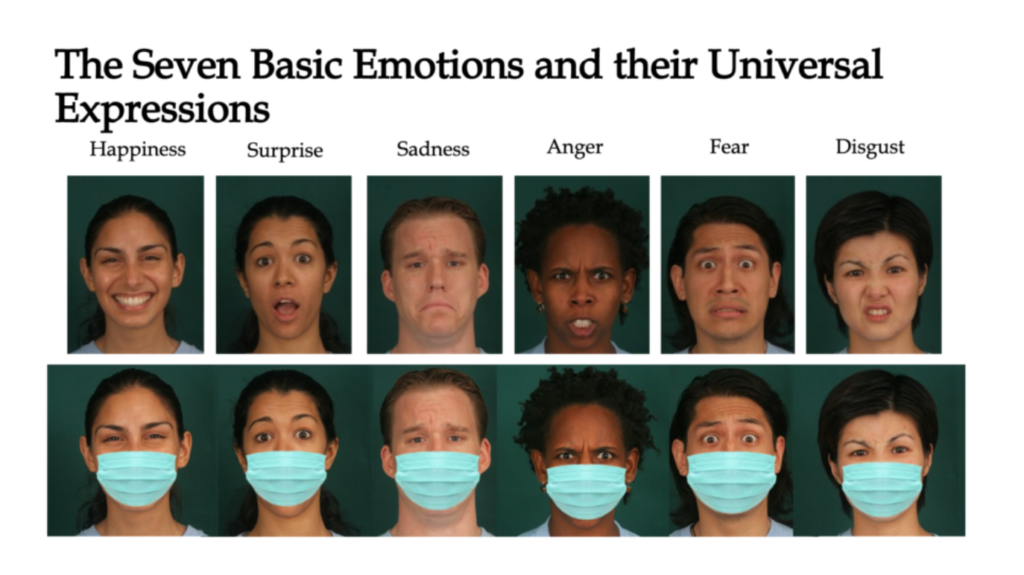 In a recent BBC Worklife article, Joanna York suggests that we’re used to reading body language and silent cues in person but with remote work, subtle ways we communicate are changing – and workers need to know how to adapt.
In a recent BBC Worklife article, Joanna York suggests that we’re used to reading body language and silent cues in person but with remote work, subtle ways we communicate are changing – and workers need to know how to adapt.
The global pandemic certainly changed the way we interact. In fact, one 2021 Beezy survey detailing digital workplace trends shows that 54% of professionals now attend more (virtual) meetings than they used to pre-pandemic (in-person). Moreover, close to half of the respondents (43%) said they now attend between 4 and 7 more meetings per week than they used to pre-pandemic.
Nonverbal Communication in the Workforce
In a previous blog we described how it’s true that when communicating digitally, the visual stimulation of a person’s behavior or in their facial expressions is almost the same as being face to face, especially given the level of technology that we have now. In addition, your auditory perception (hearing ability) is present, since you can clearly hear the other person’s tone of voice.
But there are clearly some substantial differences between being live vs virtual, including a reduction in nonverbal communication and nonverbal behavior.
What are some of those differences?
In a live context when we interact with others, we receive what Dr. Matsumoto calls “full nonverbal packages” which include:
- The face and facial expressions
- Voice
- Gestures
- Body posture
- Leg, hand and foot movements
In-person we also have the additional nonverbal cues such as the ability to sense spacing between one another, hear sounds, and experience various smells.
Virtually we have much less of these observable cues and it’s harder to read body language in general. You typically cannot see the whole body and therefore cannot see many of the body movements from the waist down that you can typically see live.
There are more distractions: on screen, you can see yourself and focus on what you look like. People’s backgrounds are static. It’s easy to pay less attention to the person you’re speaking to.
Here are 6 tips on how to communicate effectively virtually:
1. Turn on your camera and unmute yourself

While you may be tempted to turn your video off or press mute, it may not be the best idea. In fact, a 2022 survey of 200 executives showed that 92% of managers believed that employees who turned off their cameras during meetings were less likely to have a long-term future at their company.
Public speaking coach AnnMarie Baines agrees, “I have observed more people using the virtual world to hide and avoid the fear public speaking completely. By turning off our cameras and putting ourselves on mute, it is easier to opt out of public speaking and observe discussions at a distance, as opposed to being spotlighted and risk judgment and uncertainty.”
2. Create a context that is conducive to have work meetings
If possible, carve out a physical workspace at home and treat that space like you would a work environment. If you have a meeting, dress like you’re going to a meeting. Context matters!
See what you look like before the meeting; check your camera angle. Check your background, sounds, lighting to ensure it’s appropriate.
3. Stay focused on the interaction and value your connection to your audience
 It’s easy to get distracted and to think that others not paying attention. Data has also shown that during video calls, factors like camera angles, distance from the camera and ability to make eye contact all impact how likeable people are perceived to be.
It’s easy to get distracted and to think that others not paying attention. Data has also shown that during video calls, factors like camera angles, distance from the camera and ability to make eye contact all impact how likeable people are perceived to be.
York describes how eye contact particularly is positively associated with likeability, social presence, and interpersonal attraction. Yet making eye-contact on a video call requires us to go against our natural instincts as it requires you to look into the camera when you speak. Like anything, it takes practice!
4. Use nonverbal cues to confirm understanding
Use nonverbal cues – faces and voices – along with verbal content and confirm understanding. These remote meetings may take longer, and we may need to make more effort to make sure we’re all on the same page. Ask questions. Confirm understanding verbally. Not being on the same page can have dire consequences.
5. Expect and embrace discomfort
 Communicating over a webcam may be uncomfortable. That said, for many, public speaking has always been an uncomfortable and somewhat unnatural experience, even before the pandemic hit.
Communicating over a webcam may be uncomfortable. That said, for many, public speaking has always been an uncomfortable and somewhat unnatural experience, even before the pandemic hit.
Many speakers and performers use visualization techniques, where they prepare themselves by imagining the result they want. Instead of imagining situations where you don’t feel any nerves at all, it can help to imagine the jitters you might have at the start and then imagine them disappearing as you sink into the moment and connect with your audience.
It can also help to embrace the reality that public speaking will sometimes feel awful, but also that the discomfort won’t last forever — sometimes, it is only a few minutes.
6. Record and re-watch
If your service allows recording of your interactions, check out how you come off. It’s a great learning experience to see yourself.
The post How Nonverbal Communication Is Going Digital first appeared on Humintell.


 When you recognize a friend’s face, how do you know? Do you make a careful study of their nose and cheekbones? Are you thrown off if they don’t wear the usual expression?
When you recognize a friend’s face, how do you know? Do you make a careful study of their nose and cheekbones? Are you thrown off if they don’t wear the usual expression? Facial recognition is a key part of
Facial recognition is a key part of  The researchers repeatedly tested more than 2,000 adults by show them a series of faces, upright and inverted, with and without masks. Different groups of adults were tested at six different points in time during the pandemic. In addition, the researchers tested the same group near the start of the pandemic and 12-months later. In both the cross-sectional and longitudinal studies, adults showed absolutely no increase in their ability to recognize masked faces.
The researchers repeatedly tested more than 2,000 adults by show them a series of faces, upright and inverted, with and without masks. Different groups of adults were tested at six different points in time during the pandemic. In addition, the researchers tested the same group near the start of the pandemic and 12-months later. In both the cross-sectional and longitudinal studies, adults showed absolutely no increase in their ability to recognize masked faces.